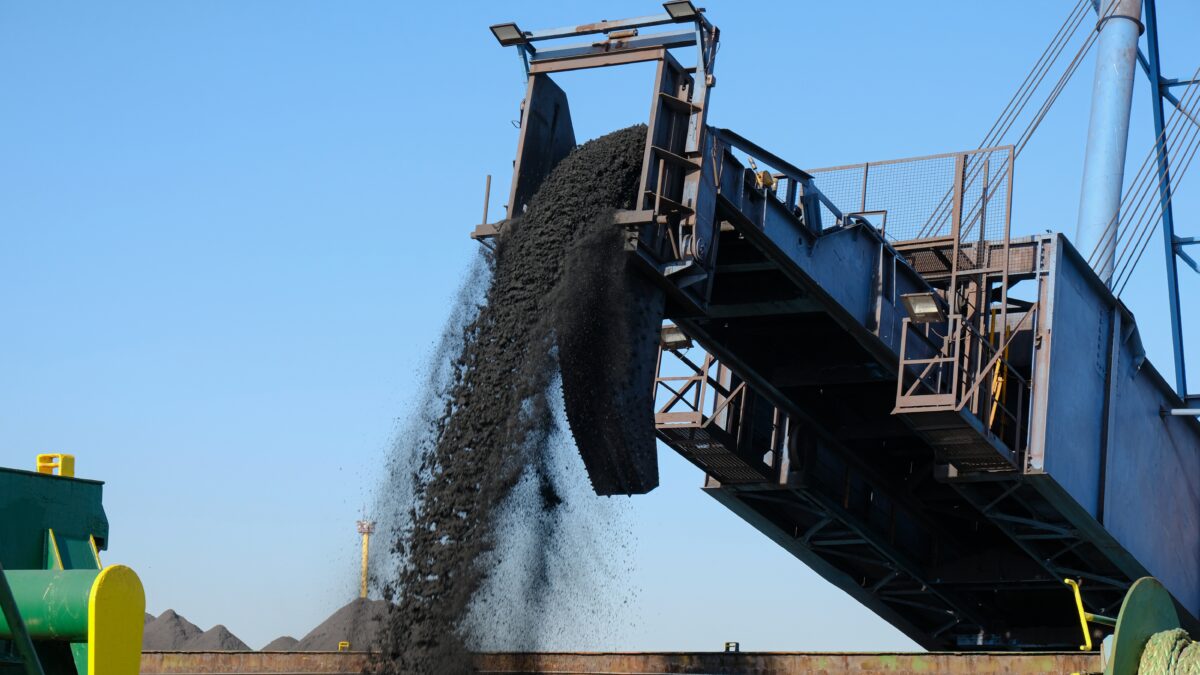Amid all the talk of global warming, climate change-induced catastrophes, decarbonization and green finance, the global trade in “dirty” coal is enjoying an ironic renaissance. Bulk ships are busy transporting coal to Asia — and to eco-conscious Europe — boosting freight income for some of the very shipowners who publicly tout their environmental bona fides to investors.
“Turns out the news of the demise of coal has been greatly exaggerated,” said Stifel analyst Ben Nolan in a new client note. “Despite an unseemly carbon footprint, coal demand is actually accelerating this year.”
Freight rates buoyed by coal
Coal is transported aboard larger bulkers known as Capesizes (ships with a capacity of around 180,000 deadweight tons or DWT), as well as on sub-Cape vessels such as Panamaxes (65,000-90,000 DWT) and Supramaxes (45,000-60,000 DWT).
According to Clarksons Platou Securities, Capesize spot rates averaged $32,800 per day on Monday, with Panamaxes at $31,800 and Supramaxes at $31,600. It’s rare in dry bulk shipping for all three segments to simultaneously top $30,000, as they have for the past five weeks.
“Strong activity in the coal markets as well as robust minor bulk volumes remain the driving force of elevated rates across the different asset classes,” said Clarksons.
The Financial Times recently pointed out that coal commodity pricing is outpacing both real estate and financial stock returns this year. The price of high-grade Australian thermal coal (used for power generation) had risen to $151 per ton as of Friday, more than triple its price last September, according to Argus. The price of semi-soft Australian coking coal (or metallurgical coal, used for steel production) was $127 per ton, up almost 80% year to date.
“Year-to-date thermal coal exports from the U.S. Gulf Coast, where exports tend to be very price- and demand-sensitive, are up 194%,” said Nolan.
Thermal coal demand drivers
Some of the extreme weather events being attributed to global warming are now increasing demand for seaborne shipments of high-carbon-emitting coal.
Exceptionally hot weather has hiked electricity usage, which is simultaneously being pushed up by growing economic activity. Higher electricity usage increases demand for thermal coal imports. “This year, a hot summer in Asia has led several of the big consumers, which had been shifting away [from coal], to not shift at all,” said Nolan.
A drought in May in southern China cut that region’s access to hydropower, an alternative to coal. More recently, the problem has been too much water in northern China. This month’s tragic floods in Zhengzhou are curtailing coal moves from inland sources. China’s state planner reported that coal transport from Inner Mongolia and Shanxi through Zhengzhou to eastern and central China has been “severely impacted.”
Hot weather is simultaneously boosting prices and lowering reserves of natural gas, which competes with thermal coal for power generation. “Even in Europe, which is the epicenter for decarbonization, low natural gas inventories are driving a sharp increase in thermal coal imports from virtually every nation,” said Nolan.
Restocking for winter
Summer demand will be complemented by restocking for winter demand and inventory rebuilding in general, as well as by demand for coking coal for steel production.
Maritime Strategies International (MSI) noted in its monthly outlook, “China’s National Development and Reform Commission has announced plans to build stocks of over 100 million tons of ‘deployable coal reserves,’ but domestic coal stockpiles are at their lowest levels since February.”
It’s not just China. According to Braemar ACM Shipbroking, “In preparation for the winter season, South Korea, among other nations, has increased coal purchases to avoid energy supply deficits.” South Korea’s July coal imports are on track to hit a five-year high.
Nolan added, “With coal prices currently in regions not seen in a decade or more, there is ample motivation to increase production anywhere and everywhere. Clearly, this is good news for dry bulk shipping moving into winter as coal is often stockpiled in advance and the motivation for such inventory building should be great given the risk of [natural] gas shortages.
“This should lead to some very interesting months starting in September, given how tight the dry bulk shipping market already is currently.”
Decarbonization and Chinese imports
One irony of the current market is that weather events ascribed to global warming are stoking demand for transport of out-of-favor coal. A second irony is that the decarbonization push in China could increase coal-shipping demand even more.
During last month’s Marine Money Week virtual conference, Magnus Halvorsen, CEO of Norway-listed 2020 Bulkers, explained, “China consumes around 4 billion tons of coal [a year] and imports shy of 300 [million tons], so any change in the import ratio to consumption will have a dramatic impact on import requirements. If China, as part of an environmental crackdown on its domestic production, produces significantly less coal, it’s going to have a strong impact on import requirements.”
According to Aristides Pittas, CEO of EuroDry (NASDAQ: EDRY), “China, for environmental reasons, is going to limit the use of its own coal mines. So, the better-quality coal [from outside China] will benefit, and that will benefit the shipping market.
“We all know coal is a dirty cargo and one that will become obsolete at some point in time,” said Pittas during the Marine Money Week event. “We are all in favor of that. We want a clean world and we want to help. But it doesn’t happen overnight. It doesn’t happen that quickly. And the road to decarbonization will create a lot of inefficiencies. Inefficiencies are usually things that help shipping markets.
“I think coal will surprise people,” said Pittas. “It’s not disappearing yet, so watch out.”
Click for more articles by Greg Miller












Matthew Brandley
Global warming 😂😂us normal people have been calling it weather for decades. Stop the scam